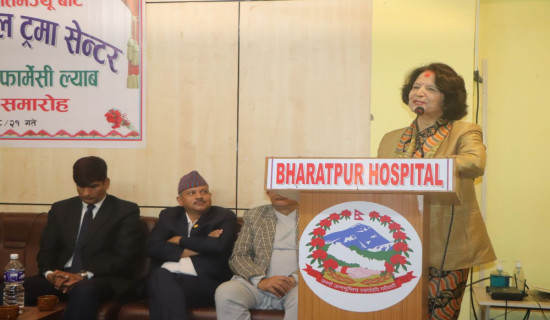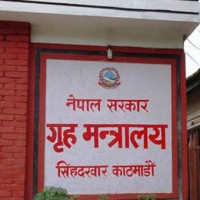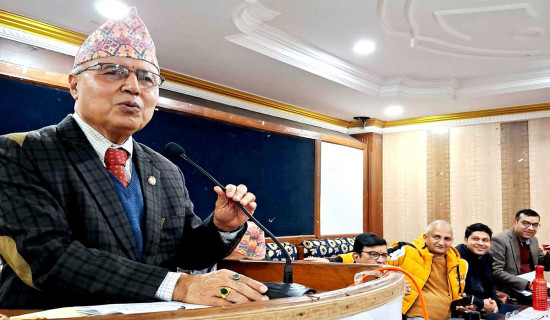- Sunday, 7 December 2025
Empower Local Levels For Environmental Good Governance
Governance is a broad concept. Since the late 20th century, environmental governance has been accepted as an indispensable part of governance, as the world started to realise that the environmental issue is not just an ecological issue but also a governance issue. The concept gradually expanded globally as more transparency, public participation and rights-based approach to managing natural resources and environmental risks were accepted as a crucial part of governance. As Nepal is environmentally vulnerable, environmental governance is an essential pillar of good governance for the country. It should be given priority at each level of government.
However, local government is the true foundation of good governance that keenly addresses the opportunities and risks within the communities. Thus, it can be said that environmental governance begins locally. Schedule 8 of the Constitution of Nepal and the Local Government Operation Act, 2074 have granted authority to a local government to formulate local policies and standards related to environmental conservation, such as biodiversity conservation, land use planning, waste management, wetland and watershed management, disaster management, etc. Likewise, the Solid Waste Management Act, 2011, has also given responsibilities to local governments for managing waste at the local level.
Indigenous knowledge
Similarly, the Sustainable Development Goals (2015-2030), the Biodiversity Convention 1992, and other related laws have also focused on the proactive role of local communities. Protection and progress begin locally. Involving local communities in planning, implementation and monitoring fosters a sense of ownership and civic responsibility. Each local government has first-hand knowledge of the social, economic, infrastructure and environmental needs of its community. Likewise, it has better access to indigenous knowledge and greater access to natural resources, biodiversity, population at risk and other aspects that impact the environment.
If it is viewed from an economic perspective, protecting the environment at the grassroots level reduces the cost of environmental management and minimises the repetitive losses due to environmental degradation. In this way, being an owner and beneficiary of environmental resources and the immediate victim of environmental degradation, local initiatives matter – legally, practically, and financially – to ensure the sustainable development of the nation. To be sure, the local levels are facing numerous environmental issues. The magnitude and nature of such issues may vary, but most of them are facing common problems such as waste management, loss of biodiversity, natural disasters and climate change-induced issues.
According to the waste management baseline survey of Nepal, 2020, most of the local levels have open, unmanaged landfill sites near the residential areas. The garbage is dumped on the river banks, forest, or is burnt randomly, resulting in the disruption of the nearby natural habitat, and creating a long-term effect on the ecosystem. These challenges, on one hand, have threatened the ecosystem, and on the other, have threatened the well-being of communities that are poor and marginalised. Despite constitutional power granted to local governments, several structural and institutional challenges have hindered their effective functioning.
First, the municipal or village council is vested with the power to make its own laws as per its needs. However, the poor legislative capacity of local government is not sufficient to exercise the power to formulate laws that address their challenges. Similarly, environmental affairs have not received adequate priority in local planning and decision-making processes, as there is the perception that just building infrastructure is development. A very nominal portion of the total budget is allocated for environmental management at the local level. Human resources is the key figure for the enactment of environment-related laws and policies. But local levels lack the human resources that can technically contribute to the management of the environmental.
Second, a lack of coordination among concerned stakeholders and a low level of awareness among the communities are also responsible for poor environmental governance in Nepal. Local levels need to be aware that environmental management is an important opportunity and responsibility given to them. They should develop their own plans by specifying local risks, needs and response options with due consultation, scrutiny and examinations. Setting clearly defined and attainable short, medium and long-term goals and an effective action plan should be in priority.
Poverty alleviation
Likewise, identification of public land and its protection should be done to create open space that could be useful during the time of disaster. Initial Environmental Examination (IEE) should be an integral part of every development project, and it should act in a way that connects the conservation of natural resources to poverty alleviation and community empowerment. This can create a powerful drive of change in the realm of the bottom-up approach, integrating the indigenous knowledge, encouraging public participation, and empowering the vulnerable groups.
After the implementation of federalism, local levels are gradually improving their capacity in environmental governance. Yet, to make them environment-friendly, sustainable and resilient, they should foster a sense of ownership, trust, and civic responsibility, as well as strengthen the institutional capacity. Empowering local governments for sound environmental management is a significant step towards building a just, accountable and sustainable governance system.
(The author is a section officer of the government of Nepal.)

















